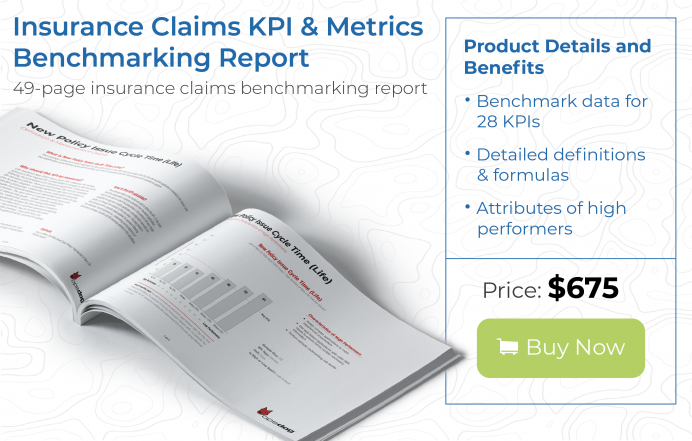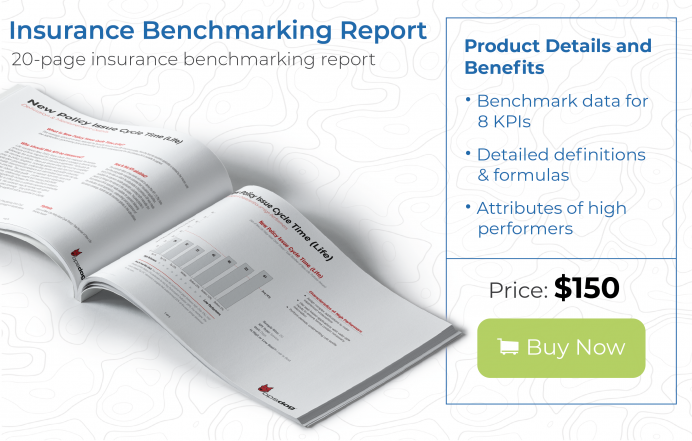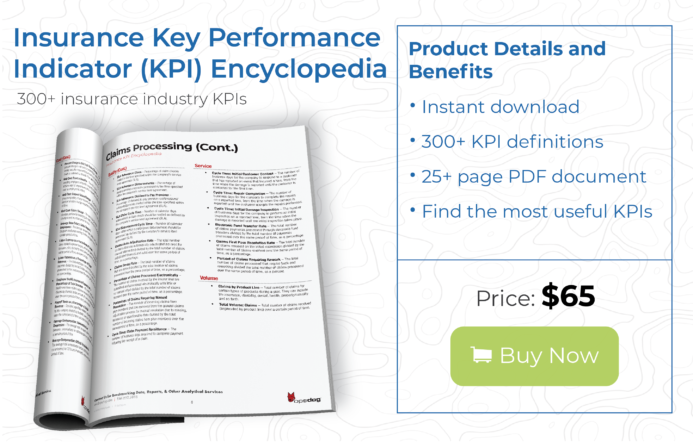Every industry is feeling the pressure to improve their customer experience, and insurance is no different. Insurance customers are demanding the type of convenient, fast, and personalized service they get from Amazon, Netflix, Uber, and others. To compete, insurers will need to up their customer experience game while still keeping costs in check.
The best and easiest way to achieve this is with customer experience metrics for insurance. These metrics help boost sales, keep customers and employees happy, all while keeping costs and risks low.
What are Customer Experience Metrics for Insurance?
Customer experience for insurance can be defined as the perception of how a policyholder views an insurer’s brand after going through the insurance process, be it claims or new business processing. While a single bad experience—like an insurer denying a valid claim—can have a huge impact on how a customer thinks, customer experience is typically the culmination of a variety of interactions between the policyholder and the insurer.
Insurers can use customer experience metrics to measure every type of interaction the policyholder has with their insurance carrier, including billing, claims, how many times customers log into the website to check the status of a claim, and how long they must wait on hold when calling customer service.
Insurers can compare these metrics to industry key performance indicators (KPIs) that are directly related to customer experience. Here are two types of KPIs with the biggest impact on customer experience:
- Claims KPIs: Perhaps the most crucial and perception-changing customer experience happens when a policyholder submits a claim.
The policyholder may be already distressed or frazzled by the incident, whether it be a car accident, a basement flooding, or someone slipping on their front steps. Once the policyholder informs the insurer that they’ve suffered a loss or damages, the clock starts clicking and any roadblocks or delays in getting their claim paid results in poor customer experience.
Insurers can look at industry KPIs directly related to claims such as settlement time, denial rate, and satisfaction rate.
- New Policy Onboarding KPIs: Other than the claims settlement process, the most interaction a customer will have with an insurer is during policy onboarding. Insurers can measure the time it takes to process the initial application, underwriting, and quality assurance and compliance metrics.
A key new policy onboarding metric is how long it takes from the time the customer submits the application until you submit the first premium bill and compare that number to industry KPIs for new policy issue time.
How to Use Customer Experience Metrics to Improve the Customer Experience in the Insurance Industry
Most businesses, including insurers, rely on satisfaction surveys to gauge if they are providing a good experience for their customers. While surveys can be a useful tool, there are plenty of quantitative metrics that you can use to compare how your insurer stacks up to others in the industry. These customer experience metrics for insurance also provide clues to the root causes of less-than-stellar business practices that might be dragging down your scores.
For instance, if you find that the time it takes to settle claims—including claims investigation, estimates, and possible negotiation and adjustment—is longer than acceptable, you can investigate several causes. Do you have a high amount of adjuster turnover and inexperienced adjusters? Are claims forms difficult for policyholders to complete so they often contain missing information? Are claims often routed to the wrong adjusters?
If customers are not completing claims forms properly, make sure that web-based applications don’t allow customers to enter incorrect or incomplete data. If adjusters are not well trained, resulting in lengthy claims times, beef up training rather than hiring additional inexperienced adjusters.
Correcting the root cause of any service issues will directly improve customer experience metric measurements.
Customer Experience Metrics for Insurance Examples
Here are five customer experience metrics that insurance companies can use to improve the customer experience:
Customer Experience Metric #1: Claim Settlement Cycle Time
The claims process is where the rubber meets the road. How long it takes to settle and close claims has a huge impact on customer retention. And for the insurer, a longer clams settlement time could indicate that you are paying out higher losses, resulting in claims leakage.
To calculate claim settlement cycle time, measure the number of days from first notice of loss (FNOL) to settlement for all claims and divide that number by the total number of claims settled.
Customer Experience Metric #2: Claim Denial Rate KPI Benchmark
It’s a balancing act: you need to pay for legitimate claims in accordance with the policy issued—but if you pay out more than necessary, claims leakage will take a bite out of profitability. If you deny payment for good claims, you’ll have to deal with angry customers, increased customer attrition, or even legal disputes. To make you’re your metrics are reasonable, compare your claim denial rate against industry benchmarks.
To calculate, divide the number of claims not paid by the total number of claims submitted. Don’t include claims that are denied due to missing or incomplete information.
Customer Experience Metric #3: Customer Satisfaction Claims
Claims settlement can make or break a customer relationship. There’s a lot of potential friction points—from the customer’s interaction with their insurance claims representative to the repair or replacement process to how fair the customer feels the payout is.
This metric is based on customer surveys. To calculate, divide the number of policyholders who are satisfied with claims settlement divided by the total number of policyholders surveyed, as a percentage.
Customer Experience Metric #4: New Policy Issue Cycle Time
Potential customers typically shop for insurance policies from several insurers at once, making it imperative that you onboard policyholders as quickly as possible—or risk losing the business to a competitor.
Determine the total number of days—from application submission (whether through phone, internet, or in-person)—until the bill was made available to the customer for all policies. Divide the number of days by the total number of new policies to calculate new policy issue cycle time.
Customer Experience Metric #5: Claims Straight Through Processing (STP) Rate
Claims that are fully automated—from FNOL through settlement—will always process faster than those claims that require human intervention. While more complex claims may require manual intervention, you should try to increase the straight-through processing rate and fully automate as many claims as possible
To calculate, divide the number of straight-through processed claims by the total number of claims processed as a percentage.
Final Thoughts
Insurers can’t ignore the impact of customer satisfaction in a competitive industry. Building a strong list of customer experience metrics for insurance can provide a leg up over your peers in the industry.
Consumers have many choices for insurance providers—and can easily switch providers using digital self-service. How you onboard new policyholders and handle claims can win customer loyalty—or cause customers to leave.
Are you tasked with reducing and minimizing insurance claims leakage? Find out how to accelerate those efforts here!
There are many customer service metrics for insurance to consider while building an list of KPIs to measure for your business, for a full list of insurance performance metrics download our Insurance Key Performance Indicator Encyclopedia.
If you need additional help benchmarking against your peers or choosing the right customer experience metrics and KPIs to benchmark, then help yourself to our presentation-ready Insurance benchmarking reports, or contact us for more information about our KPI & Benchmarking Services. We can help you quickly and efficiently benchmark your insurance company and provide you with high-quality deliverables perfect for presentations at an affordable price.




